Probably every gardener dreams of a flower of incredible beauty with unpretentious care and quick adaptation to climatic conditions. It turns out that such a plant is called it - Bletilla orchid. Buy flower you can in any horticultural center. It is possible to grow culture in the open soil, winter garden and even at home.
Bletilla Orchid - Culture Features
The birthplace of the flower is Eastern Asia, so this orchid of gardeners are often called "Asian". Culture is a perennial herbaceous plant. The overall height of orchids in centimeters is only a few dozen.
The leaves are painted in a saturated green shade, have a lanceal form (a narrow sheet, which is pointed at the top). Some grades have a foliage coloring. By density, the leaves are soft, in length grow up to 50 cm.
The brush in the orchid low-shit, buds are revealed at the end of spring or in the summer months. Such a gap between the floweros of one type of orchids is explained by the climate in which flowers grow.
The very shape of flowers is classical, which is familiar to most orchid varieties. Bletilla in most cases has a purple flowers or purple flowers with a pink subtock. But some orchid varieties have white and yellow flowers. Bleetile flowers exude a thin fragrance.
The pseudobulb is rounded, they are not strongly rooted into the ground, so weakly shrouded. Possess a dense form, at the beginning of the season they produce several sprouts.
Bletilla and varieties of orchid
Bletilla orchidulla has about 10 varieties. For home cultivation, gardeners chose several of the most popular species. You can prefer one of them or use in a flower bed at once 2-3 types for color solutions in landscape design.
Bletilla Striped Hyacintic (Bletilla Hyacinthina)
Most often in garden sites and in winter parisades, you can meet this kind of orchids. He is the most popular. Botanical name of Bletilla Striata, Bletia Hyacinthina. Gardeners call this type of bleetylah hyacintaya, striped or strrsier.
- Orchid reaches in height from 30 to 70 cm. The pseudo-bulbs are formed by year-old growths, which in shape resemble dirty thickening. Leaves are large and smooth with longitudinal folds, dark green. The plant has a false stalk with a height of 15 cm., Which is formed from long pseudolistes, tightly pressed to each other.
- The inflorescence is an oblong spike, which can be formed up to 8 buds. Sometimes orchid can release only one bud. Flowers are quite large compared to other varieties of bleethiculla in size about 4 cm, with pointed 5 petals and a large lip. The shade of flowers is bright with pink and lilac shades. Orchid fragrance thin and gentle.
- Each flower produces a lip with three blades of an extended shape with oval edges. Extreme blades look up and bent inside. The third buoy of buds is located in the middle, has longitudinal scallops with white tops. The base between scallops of dark purple color with dark clips.
- For cultivation, it is necessary to place on the plot with a half and sufficiently wet soil, but not excessively moistened. Plots with such a soil are suitable for planting and growth: loam, clay and alkaline.
Bletilla Streat Alba Striya (Bletilla Striata Alba)
- Beautiful grassy shrub, long-term, up to 70 cm high. The inflorescence grows in the form of a spoal, on which it is collected from 3 to 8 flowers. White-white booth buton petals, large flower itself, is formed up to 5 cm. Flowers orchid only 1 month.
- Large leaves with bright green color, spreading. This bleetillat colors are suitable for growing in containers, terraces or alpine slides. The area for the growth of orchids should be covered by sunlight and draft. In care, avoid excessive moisturizing and flooding with waters after melting of snow.
- For the landing, a ground mixture is used, in equal parts consisting of sheet soil, lime and sand. Or use the finished land for planting orchids. The remaining landing conditions, reproduction and peculiarities of the data of the Bletilla variety are the same as for other varieties of orchids.
Bletilla Streat Purple Striped (Bletilla Striata Purple)
- This Bletilla variety is considered exotic with bright flowers. A perennial plant whose bush reaches a height of up to 45 cm, with wide leaves of 20 to 30 cm. The shape of the leaves is pointed on the top, reverse lanceal with longitudinal folds.
- Flowers reach size up to 4 cm., Have a bright color of a purple-purple shade. On the colosum is formed from 3 to 8 flowers. Bouton's lip is wide enough with three blades. Lower blade with scallops lighter shade. Begins the bloomon in June and lasts 3 weeks.
- Choosing a place, soil and conditions for the cultivation of this grade Bletilla is the same as for the species of Streat Alba. It is recommended to inspire the soil around orchid. If a harsh winter is expected or you have a region with cold winters, then the flower is digging and stored in a cool, dark room.
Bleetilla Buo-Yellow (Bletilla Ochracea)
- Perennial herbaceous plants up to 40 cm high. They are considered representatives of this type of bleetilla. Soft leaves, weakly green with bright folds. Brush Inflorescences in orchid Sorted low-ceiling varieties, blooming reaches a length from 35 to 40 cm. Little flowers, the form does not differ from most other orchids. Have a poor fragrance.
Bletilla, photo
Although bleetilla varieties are not enough, the beauty of such plants is very attractive. Orchids with any color of buds will become a real pearl in your flower bed or a greenhouse.
Conditions of cultivation, soil preparation and bletilla landing
Orchid feels well in the open soil in almost any climatic conditions with a temperature in winter at least 5 degrees of frost. If you have a cold climate, then grow culture is best in containers that are located indoors or winter garden. For effective growth and abundant flowering, it is important to observe not only the conditions of cultivation, but also the composition of the soil mixture for disembarking, as well as to take into account the features of planting seedlings.
Lighting for Bletilla orchid and place choices
- Bletilla has plentifully flowers and develops well at sunny areas. In the shade, the flowers acquire a bell shade and decrease in quantity. At the same time, the plant should be protected from direct sunlight at noon. It will also be a seat with a half.
- When choosing a place for the growth of Blebully, give preference to sites protected from strong wind and drafts. The petals on the colors of orchids are very gentle and may be imposed with a strong air flow, and drafts can harm the whole bruise.
- It is best for growing plants, southeast and southwestern sections in the garden are suitable. If you decide to plant orchids in the southern part of the garden, then you have to install a protective screen over a bush. She will close the plant from sunny heat on hot days in summer. With room cultivation, orchid should be placed on a place with good lighting, but without direct sunlight.
- Orchids require not only the choice of place, but also the neighbors. Bletilla itself is used in a flower bed as a bright accent with a saturated shade and original beauty flowers. Therefore, near the plant, disembark perennial flowers that will not compete with orchid on beauty and growth rate. For example, in the gardening site, the orchid will dominate against the background of low-spirited ferns, hostes, mellular azen.
Temperature and air humidity level for bleetilla
- Orchid does not like dullness and poorly tolerates a strong wind with drafts. That is why the flower should be ensured by complex care, both in the open ground and at room growing.
- Orchid feels comfortable in a moderately continental climate, in the regions with a snowy, but moderately frosty winter. Culture also like warm and wet summer. If the conditions are not suitable for the cultivation of Bletilla, then its bloom can completely stop or decrease.
- When planting orchids, choose areas that are not flooded with melt water and dry. It is also important to establish a good drainage system. For the wintering flower in the warm climate, it is possible to leave it on the outdoor soil, only pre-covering the fallen and dry foliage. Then the bush is covered with insulation. With winter frost, 5 degrees below zero, it is recommended to dig or storing or stored in a dry basement.
Soil preparation for boilerla orchid landing
Most of the sorts of Bletilla's orchid varieties can be planted in conventional gardening soil. Only for some varieties need a special soil. Therefore, specify this question from consultants in garden centers. If you are not sure what your Bletilla variety you have, then you can use the soil mixture in the finished form for planting orchids.
The ground mixture can be prepared independently. To do this, mix in equal proportions of lime, river sand and sheet humus. Lime will reduce the soil acidity, the sand will increase the air permeability of the soil and allow moisture to penetrate into the ground faster.
If you want to provide conditions in your garden for a plant that are as close as possible to natural, then prepare the soil mixture with other components. In the same quantity, prepare the charcoal and ash, moss, crumbs, crushed wood bark. Add to the mixture 2 parts of the peat. Such a soil will have granules of different sizes, which will allow the water to pass well and ensure air flow to the root system.
To land Bletilla at room cultivation, use the finished soil mixture for orchids. At the bottom of the tank, be sure to lay the drainage layer. It is necessary to plant pseudobulbs only to wet soil.
Bletilla landing features
You can grow the orchid type of bleetilla in 2 ways: seeds and with the help of pseudobulb. The last option is most often used gardeners in their practice, as orchid can be blooming in the first year after landing. When landing bleetilla from seeds you will need more time to grow seedlings and for the formation of pseudobulb.
- If you first plan the orchids with pseudobulbami, then it is best to buy them in nurseries or in proven garden centers. With independent reproduction of colors, choose the pseudo-bulb with a flat surface, without damage and with a smooth color. On the planting material should not be traces of rot.
- A month before the planned disembarkation of Blebully, bring the bulbs into a warm place. Carefully inspect and teck the most strong copies. When on pseudobulbach, the process will only begin to sort the proof, it is necessary to go to the landing.
- In the open soil orchids are planted only in the spring, when the soil warmed well and there are no frosts for a long time. For landings, prepare small holes with a size of 10 10 and a depth of 10-15 cm. At the bottom of the bottom of the drainage layer from the clay or broken brick. You can also use small limestone pieces. Drainage should occupy a third of the height of the well.
- From above drainage pour prepared soil for planting. You can add mineral fertilizers or ready-made orchid additives. Use the drugs strictly according to the instructions so as not to burn the bulbs.
- The pseudobulb is immersed in the soil at a depth of no more than 5 cm. The soil around is slightly compacted and the ring on the edges of the wells is formed to prevent the injection of moisture. If necessary, then on top of the hole is poured with a small amount of soil. If you plan to plan several plants nearby, then save the distance at 15-20 cm between them.
- In the first days after the soil landing should be wet, so only irrigation is carried out. Full watering must be carried out only when the first sprouts appear. Further watering scheme is normal, as for orchids.
- When planting a flower in a pot for room growing, pseudobulb is required with already formed small sprouts. Drainage is laid on the bottom of the container. Its composition is the same as for landing in an open ground. On top of it, a finished substrate for the cultivation of orchids is poured.
- Lukovitsa position the roots on top of the drainage and neatly pour around the soil. At the same time, make sure that the sprouts are located above the ground. Watering conditions are the same: the first month only irrigation, then watering.
- When growing bleetilla seeds, a container is used, which is filled with soil for planting orchids. Then slightly moistened, but does not water. Make a few rows on the ground, lay out the seeds and pour the soil on top.
- For the appearance of the first sprouts, it is necessary to keep the soil wet all the time. Watering in full starts only after a couple of months after the sowing. Seedlings provide sufficient amount of light, if necessary, add artificial lighting. Temperature mode should not exceed 25 degrees above zero.
- Fasteners need to conduct hardening procedures. To do this, select Sunny days, take the seedlings on fresh air. Gradually increase the time of finding colors on the street. Right before landing in the open ground, leave sprouts on the street for the whole day.
Correct Bleetile Care
Care for this kind of orchid is much easier than other types of culture. As you know, some orchid varieties are very picky and capricious for growing both in the open soil and in room conditions. But at the same time, Bletytilla requires some rules in care and other preferences when growing. It is irrigation, a chart of making feeding, prevention of diseases and protection against possible pests.
Bletilla irrigation conditions
Bletilla loves moisturized soil. But this does not indicate that it is necessary to pour it daily. The frequency and volume of irrigation are different for just planted bulbs and already formed plants.
- So immediately after landing, the soil should be kept in a slightly humid, prevent it from drying out. During this period, only irrigation is used. When the first sprouts appear, proceed to the full watering. Be sure to make sure that the moisture does not fall on the flower petals. Otherwise, buds can start grew.
- Watering should be increased during the flowering of culture and gradually reduce in the autumn period. Before wintering, it should be completely stopped by watering 2-3 weeks before shelter the bush for winter or digging the pseudobulb.
- The frequency of irrigation is regulated by weather conditions and the degree of moisture penetration into the soil. So on sunny days, increase the amount of water, and in the rainy days completely stop watering. It is important to observe one rule when painting Blebully - the roots must be sinking only once every 7-10 days. In the rest of the rest, it is necessary to ensure the humidity of the plant in such a way that the soil remains constantly wet.
- During rest orchid loses the leaves. Watering stops completely and continues only after the release of Bletilla from this state. In the open ground, the bush should be pronounced, and with room cultivation, make a container in a dark place.
When boarding bleetilla on the Alpine slides, do not choose the places at the very top, since there moistle will evaporate, and penetrate the soil faster. Sit orchid at the base of the composition and consider the neighborhood of other plants. They also have to love wet soil.
Terms and rules for making feeding for bleetilla
Fertilizers not only give bleethylene growth, but also support it during flowering, and also make it possible to form a strong pseudobulb. Therefore, you should not neglect the feeders that will provide health to the plant.
- The very first feeding is made with the fertilizer when landing. All subsequent feeders, except for the preparation of the plant to wintering, are used on the type of drugs. So, if you added mineral fertilizers to the soil or overwhelmed dung, then the next feeding should be carried out only during the orchid flowering period. The amount of fertilizer has enough for the growth of the bush.
- For orchids, which grows in a permanent place for several years, the schedule for the use of fertilizers is different, it is divided into 4 periods. The first feeding is made in the spring when the soil is completely warmed. At this period, fertilizers need, which will ensure the growth of the flower and will be able to form buds.
- The next series of feeding falls on abundant blossom bluetics. Use comprehensive fertilizers to support the floweros and provide a bright color from orchid petals.
- When the plant completely blends, the next period begins to make feeding. At this stage, it is important that the growth of the bush will completely stop and begin to strengthen the bulb. This will allow the pseudobulbe to move the wintering and stay healthy.
- The last making of the feeding falls during the preparation of the plant to wintering. Use fertilizer for 2 weeks or immediately before the shelter of the bush insulation. If you dig up the bulbs for the winter, then the application of fertilizers is not required.
If you are not sure which drugs are used in a period or another period of fluthetlary, then add fertilizer to the soil specifically designed to care for orchids. The same feeding should be used at room growing colors.
Soil Care around Bletilla Flowers
Throughout the entire period of growth and flowering orchids, we must rather remove weeline plants. Do not allow the weeds to grow, the more contemplated seeds. They should be left at the first appearance. Otherwise, the developed root system of weeding plants when removing from the soil can damage the bulb. It is important to understand that weighing plants not only take on nutrient elements, but also can cause colors.
The soil looser is carried out only during the drying period of the roots and after the protracted rains. Some gardeners generally refuse such a procedure or make it very rarely, since the roots with a bulb lie very close to the surface.
Although the orchid loves a wet soil, should not be allowed to wind the bulbs. From this will relieve loosening, although rare. In addition, it will provide the inflow of air to the roots. It is necessary to carry out the procedure very carefully, while not immersing the garden inventory deep into the ground. Otherwise you can damage the pseudobulb.
Orchid preparation for wintering
If you have a mild climate with warm winter, then Bletilla does not need any shelter for wintering. The procedure for preparing the plant by winter is reduced to the removal of all the remaining leaves and the stem of the bloody. Soil feels and murdered. For mulch, you can use fallen leaves, sawdust or finely chopped bark of trees. The mulching layer will save the plant from excess moisture in the winter.
With zip with a decrease in temperature to 5-10 degrees, frost requires root shelter. For this, the plant after the mulch layer is covered by observer material, but not a film. Even in winter the roots of orchids need to breathe. When using a film root forbidden.
- The pseudobulb is completely digging at the harsh winter. In a strong frost, the plant will perish. Dug-in bulbs lower in water so that the soil behind is behind. The pseudobulb is dried in the shade with good air circulation over several days.
- The planting material must be covered with a damp cloth to prevent the root drying. Then the bad roots are removed. The material is inspected for the presence of mechanical damage and rot.
- Store orchid pseudobulb is needed in a cool, but not cold place. It is necessary to completely remove the light and provide low air humidity. It is important to play the room with bulbs as possible for the inflow of fresh air.
For orchid grown in roommates, no bulbs should not dig. In a state of rest, the container with a plant is rearranged into a darkened place. It should be slightly reduced the temperature in the room and stop spraying the branches.
Bletilla transplant features
Orchid is well tolerating a transplant to a new place. At the same time, several young pseudobulb can be separated if the plant was long in the ground. The transplant procedure is necessary in early spring when sprouts have not yet begun to appear from the ground. But at the same time the soil should be well heated.
- For a new place, choose a plot from the half. A hole and landing soil prepares in advance. The soil mixture is the same as when used during the landing. Drainage is stacked on the bottom, which is poured from above with a small amount of soil.
- Bletilla roots are close to the surface. Pulling the pseudobulb must be neat and with a large number of soil. The land of the earth is completely immersed in warm water. So the excess soil will be splashing and lagging.
- Hands carefully rinse the pseudobulb from the soil residues, cut damaged and sick roots. Sections of cuts should be treated with wood ash. Dry bulbs on paper towels, but do not allow them to dry. To land on the prepared hole, lower the pseudobulb, pour the soil from above and compact it with your hands.
- Transplanting plants in room conditions is sufficient. The procedure is carried out when Bletilla is at rest stage. The bulb gets from the pot together with the soil. If you find it difficult to do this, then gently cut the container.
- Further actions are the same as during the transplantation of plants in open ground. The bulbs are soot, rinse and dry. At the bottom of the container, lay out the drainage that will occupy a third of the container. Believe the bulb and fall asleep the earth. If the stalks are long, then the support is installed before soil falling asleep. Otherwise, you can damage the bulb when plunging the knife.
Possible pests and diseases of the plant
- The main disease of orchids is black rot. It strikes the pseudobulb and leaves, manifests in the form of tissue darkening. There is a disease in violation of the conditions of growing plants - this is an increased humidity and low temperature. Unfortunately, the patient plant is only destroyed. Neighboring bushes and other flowers must be processed in the preventive purposes of copper-based fungicides.
- Since Bletilla loves wet soil, it is important to prevent excessive moisturizing. Soil harness leads to fungal diseases of the root system primarily and plants as a whole. For treatment, it is necessary to reduce the frequency of irrigation and treat the bush with chemicals. If the defeat is too large, the orchid is destroyed by burning.
- Among the pests of orchids, snails and slugs are distinguished. They eate the tops of young roots. You can get rid of them mechanically or install protective equipment around the bush. It is important to inspect the plants daily to the presence of such pests.
- In the spring, when young sprouts begin to appear, orchid can damage the green till. It is possible to cope with it only by chemical preparations with a malathion content. When using any drug in the fight against pests or for treatment purposes, it is important to comply with the concentration specified in the instructions.
Bletilla for care is a very unpretentious plant compared to other types of orchids. But such an exotic flower will still require attention from you. For timely care and observance of the Bletilla landing rules will please you with its bright flowering.

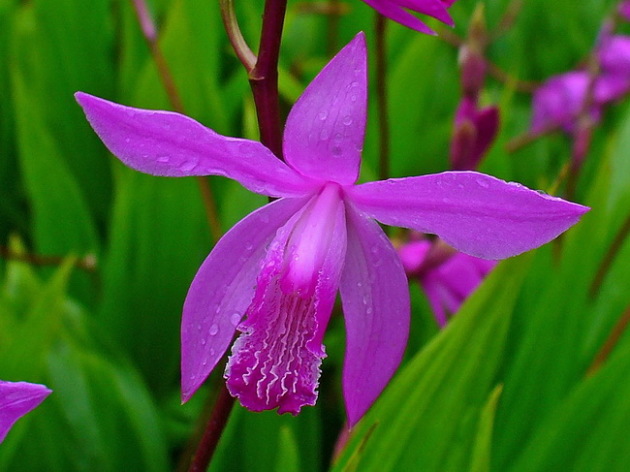
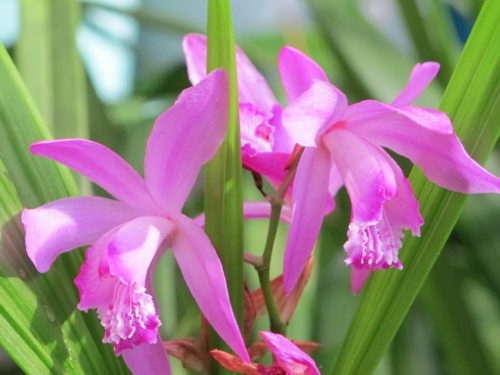
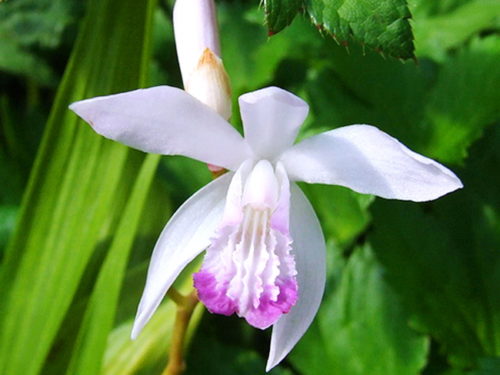
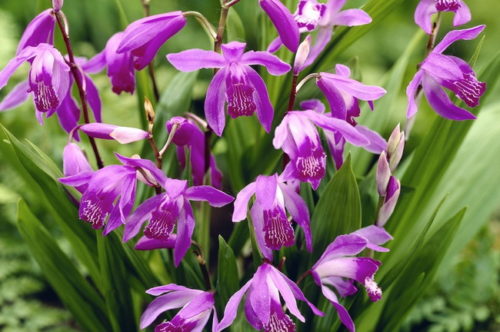
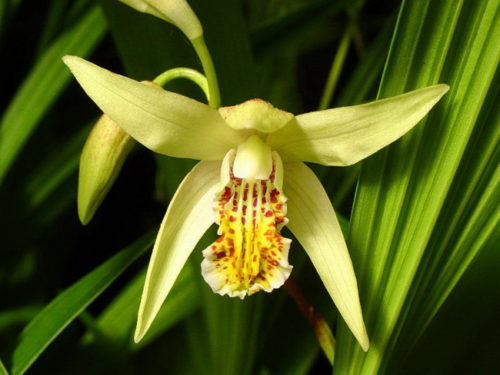
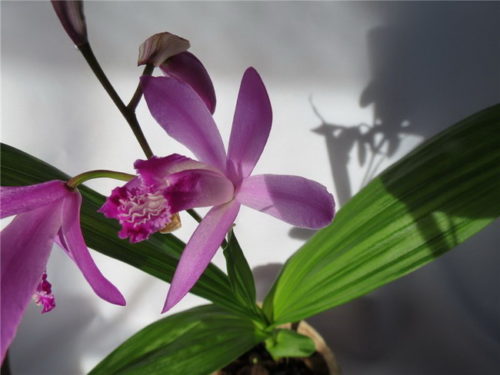
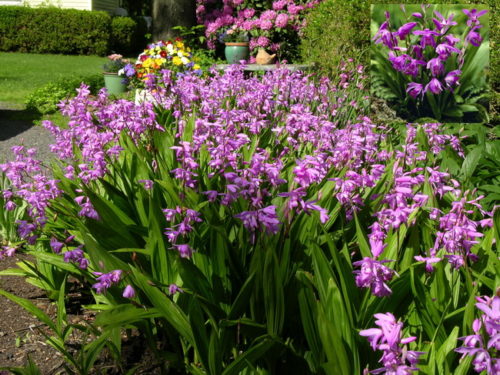
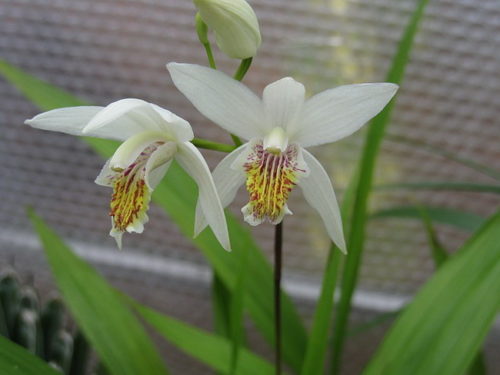
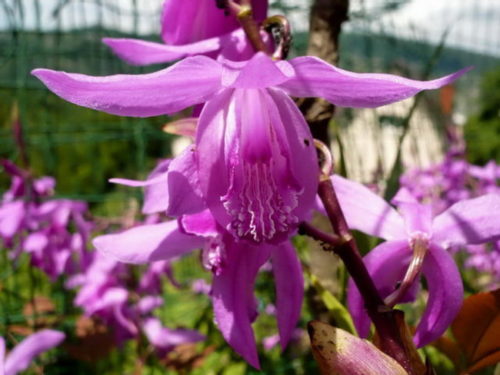
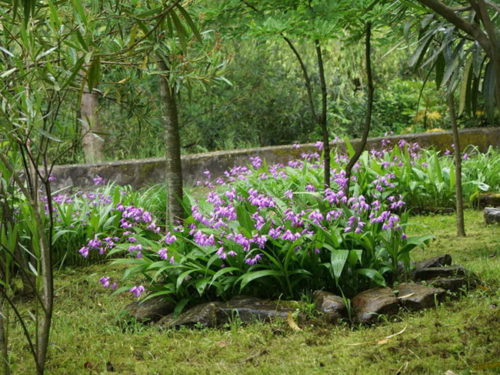
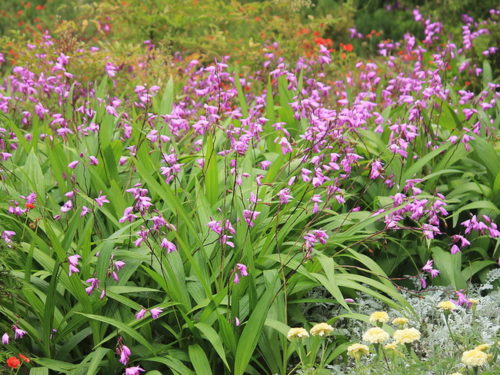
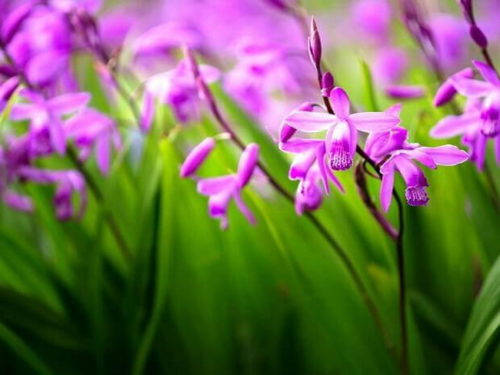
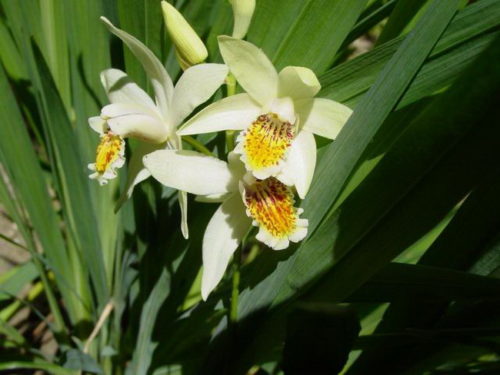

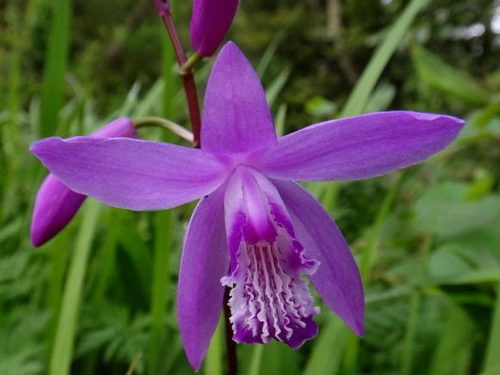
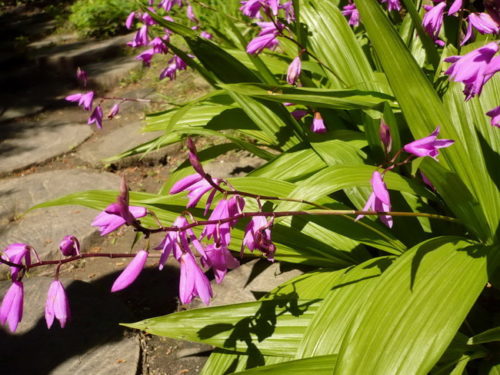
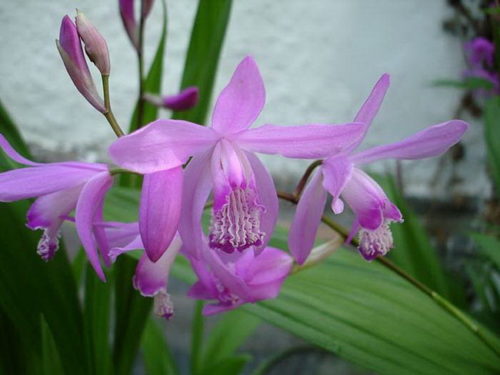
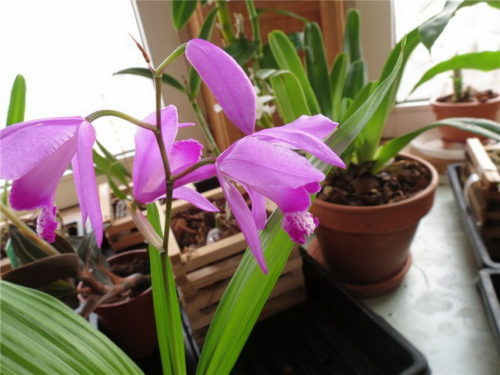
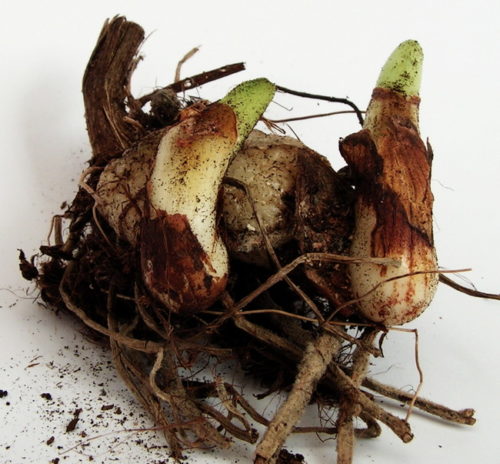
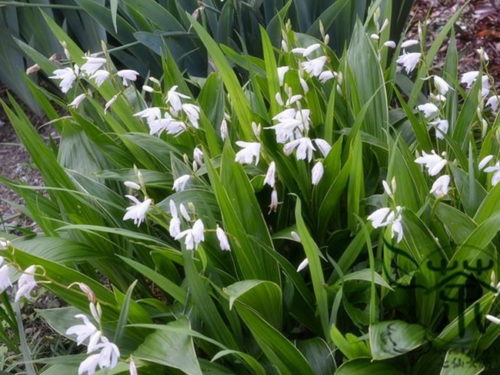
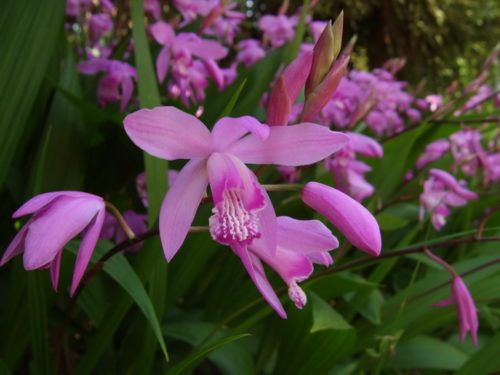
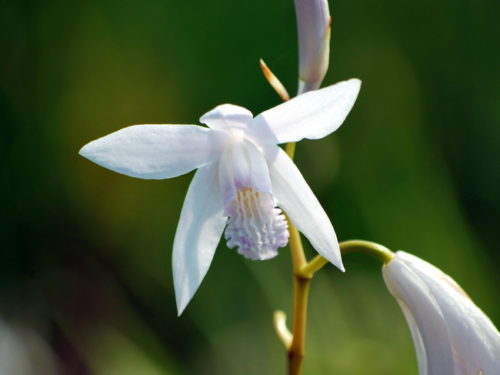
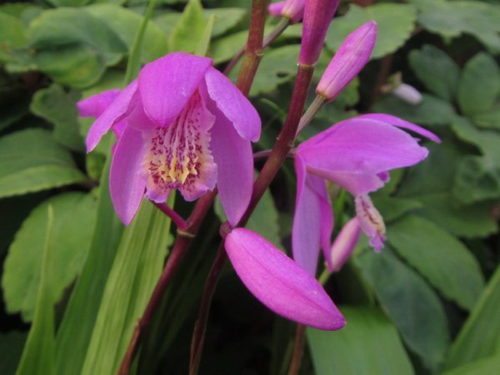
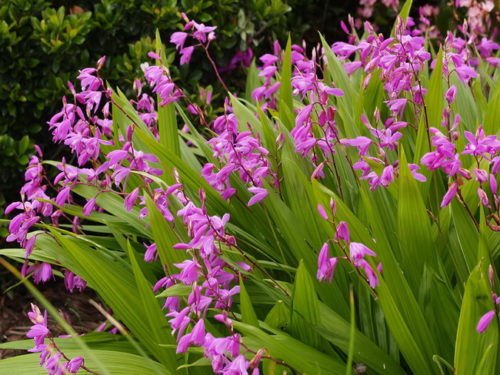












 Start a discussion ...
Start a discussion ...